Oct 27, 2012 | auction, Carson City, coins, gold, GSA, silver, tokens
How many of you look at the online auctions from the auction houses dedicated to numismatics and feel intimidated?
I can see quite a few virtual hands raised. You probably like coins shows but find the large crowds at some of those shows may also be intimidating. After all, you’re a collector, not an investor or a professional. Sometimes, you can find gems at smaller shows and even smaller auctions.
This is why I was intrigued by an auction notice sent by Stephenson’s Auctioneers and Appraisers from Southampton (Bucks County), Pennsylvania. Judging by their website, Stephenson’s is a local auction company that mainly serves buyers and sellers in its region with and probably has some clientele outside the eastern Pennsylvania area where they are located.
The nice thing about these local auction houses is that they are more accessible than the big houses and they usually have items that are affordable to the average collector. While high-end auctions are fun, if you are buying for yourself, you may not be the type looking to spend six-figures or higher on a coin.
If that is the case and you are in the Bucks County, Pennsylvania area on Friday, November 2, you may want to stop by Stephenson’s and check out their more than 200-lot coin auction that may include “some nice last-minute surprises.”
These are estate auction from the eastern Pennsylvania area. According to the information sent to me, the auction includes a wealth of Morgan silver dollars will be offered, with no fewer than 15 lots comprised of three Morgans each. An uncirculated 1882 Carson City Morgan silver dollar is one of the highlights, and another early example is a trade silver dollar dated 1877. Other antique American coins include Capped Bust half dollars from 1809 and 1838; an 1806 Draped Bust half dollar, and a Seated Liberty half dollar from 1843.
The auction includes two gold pieces. One is a 1914 Indian Head quarter eagle ($2½) and a 1917 $1 gold coin commemorating the slain U.S. President William McKinley.
There are many collectors’ books of coins, including a Washington quarter book (1932-1945) with 24 silver quarters, a Liberty Head nickel book (1883-1912) with 25 nickels, a Standing Liberty book with 10 silver half dollars, a Mercury dime book with 74 silver dimes, including 1921 and 1921-D; and a book consisting of 60 Buffalo nickels. Also included are a Walking Liberty half dollar book with 14 half dollars, a Barber dime book, Roosevelt dime book and Kennedy half dollar book with 59 Kennedy halves, including three 1964 and nine 1965 through 1970 coins. Flying Eagle and Indian Head penny sets will be available, as well as many other books, too numerous to mention.
Desirable non-monetary gold and silver items with both intrinsic and historical value include a boxed set of three 24K gold over .999 silver ingots commemorating the 1973 Triple Crown Winner Secretariat, and a framed sterling silver set titled “The Official Bicentennial Medals of the Thirteen Original States.”
Other lots of interest include two California Gold tokens (1852 and 1853) and an 1860 $5 note issued by the Miners and Planters Bank of North Carolina. Fractional currency, and U.S. Prestige and Olympic Prestige sets.
Auction will be held on Friday, November 2, 2012 at Stephenson’s gallery located at 1005 Industrial Blvd., Southampton, PA 18966. Auction preview is on the auction day from 2-4 p.m. The auction starts at 4 p.m.
For additional information, call Cindy Stephenson at 215-322-6182 or e-mail info@stephensonsauction.com. There will be no Internet bidding for this sale; it is exclusively for gallery, phone and absentee bidders. Visit Stephenson’s online at www.stephensonsauction.com.
If you are in the area, go and have some fun. Who knows, you may find something interesting to bid on!
Some of the items in this auction
-

-
1882 Carson City uncirculated Morgan silver dollar with original GSA box and paperwork. You do not see too many CC Morgans with the original box and paperwork!
-
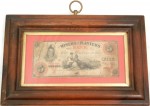
-
1860 $5 note, Miners and Planters Bank of North Carolina.
-

-
Three 24K gold over .999 silver ingots Commemorative of Secretariat.
-

-
Thirteen sterling silver “Official Bicentennial Medals of the Thirteen Original States.”
-
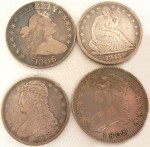
-
Early US coins, including 1809 and 1838 Capped Bust half dollars, 1806 Draped Bust silver dollar, and a, 1843 Seated Liberty half dollar.
-
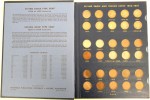
-
Flying Eagle and Indian Head Cent set in a Whitman Album
-

-
1914 Indian Head Quarter Eagle ($2½) gold coin and McKinley Commemorative “Dollar” gold piece.
-
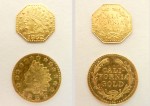
-
1852 and 1853 California Gold Rush tokens
All images courtesy of Stephenson’s Auctioneers.
Aug 23, 2012 | apps, auction, iPad, review, technology

Heritage Mobile Catalog Opening Screen
This review is for the Heritage Mobile Catalog for the iPad only. Heritage has a separate app that works for the iPhone and iPad that is a wrapper around their mobile website. Do not confuse the two. The Heritage Mobile Catalog app is an application and different from the website. The Heritage app provides nothing more than what you can experience if you opened Safari on your iDevice and went to HA.com. For Android users, you are not missing anything by not having the Heritage App. I deleted the Heritage app from my iPhone and iPad.
The Heritage Mobile Catalog app is works in portrait and landscape mode on the iPad, but I found that using it in landscape mode looks better. When you open the app, you are presented with a number of virtual “catalogs” of Heritage’s various auctions. Even though this blog is interested in numismatics, I like to look at some of Heritage’s other auctions—which is why I now own some older political memorabilia. For this review, I selected the catalog for the August 3 Currency Signature Auction in Philadelphia.
The first issue that users will experience is this is not a “real-time” application. Before being able to browse an auction, you have to download the catalog. This can take some time depending on your connection. Even a more recent test using my home WiFi connection at full strength and no other activity I lost track of the time it was taking to download a catalog that was reported to be over 164 megabytes. All I remember was that during the wait I was able to make a bio-break and pour a beverage. If I was not trying to refresh my review, I would have given up and opened Safari to go to their website.

The Update dialog for the Heritage Mobile Catalog app.
You can avoid the dialog box if you press the “Update Bids” button. This will do the same as the dialog box, but you have to remember to press it first before pressing the “View” button to see the catalog. In either case, this is not a straight forward interface for the ordinary user. In fact, as a note to the project manager at Heritage, this type of interface reminds me of the book The Inmates Are Running the Asylum. The first half of this book makes it worth reading.
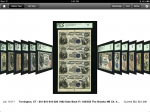
Gallery View in the Heritage Mobile Catalog app is similar to Apple’s cover flow.
List View really lets you get down to the business of browsing and bidding on the auction. While Gallery View is nice, you will probably use List View more. Both views allows you to sort the list by several criteria and the Refine button will let you search for specific items and let you narrow the display by relevant terms. While the images here are screen shots from a currency auction, the Refine Search adapts to the type of auction you are viewing.
Where the annoyance returns is the “My Heritage” button that does not offer a service but connects you to the Heritage website and uses the output from the website as the display. In order for an iOS application to open a web page, it has to bring up a separate window that overlays over the app. There’s a “clunky” feeling to this type of interface that I find annoying.
When you tap on an auction to bid on it, users of the eBay for iPad app will find familiar. There is nothing wrong with this interface because I think the Heritage version is a cleaner and a little more intuitive than the way eBay crammed everything into their version.

Bid screen in the Heritage Mobile Catalog app.
While I can speculate on why the Heritage Mobile Catalog app does this type of pre-loading, the bottom line is that it takes too long and does not update prices in “real-time” as their announcement claims. While other apps find ways to integrate their backend processing directly into the app, the Heritage Mobile Catalog has a “bolted-on” feeling. With the exception of the Gallery View, why should someone use this app over opening the browser and directly accessing the auction on the website?
I wanted to love this app but the interface annoyances has me using the website more than this app. It is like a mint state coin that is not well struck which is why I am grading this app MS60. Whomever is responsible for this app at Heritage should look at similar apps (eBay) and consider attending the next Apple World Wide Developers Conference to attend the course on what makes a good iOS interface.
-

-
Heritage Mobile Catalog Opening Screen
-

-
After the catalog is downloaded, the downloaded catalogs are sorted first in the Heritage Mobile Catalog.
-

-
The Update dialog for the Heritage Mobile Catalog app.
-

-
Gallery View in the Heritage Mobile Catalog app is similar to Apple’s cover flow.
-

-
Even though Gallery View is fun, serious bidders might use List View more often in the Heritage Mobile Catalog app.
-

-
Heritage Mobile Catalog sorting options.
-

-
Heritage Mobile Catalog search and refinement options.
-

-
Administrative interfaces in the Heritage Mobile Catalog app is directly to the Heritage website.
-

-
Heritage Mobile Catalog app credits… who to blame! 🙂
-

-
Using the search option to look for currency from Maryland in the Heritage Mobile Catalog app.
-

-
MyHeritage display is nothing more than the reformatted webpage and not native to the Heritage Mobile Catalog app.
-

-
Bid screen in the Heritage Mobile Catalog app.
-
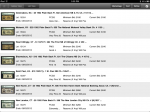
-
A different sort image in the Heritage Mobile Catalog app.
-

-
Heritage Mobile Catalog app can only show you the catalogs you want to see.
&nbps;
May 22, 2012 | auction, grading
Online auction site eBay sent out a notice today to sellers of coins to remind us that their new listing policies for coins go into effect on May 31. They also announced that ANACS and ICG has met their new standards allowing coins to be sold as graded.
Coins from other services must be listed as raw including those old PCI slabs with J.T. Stanton’s autograph, which some believe are collectible in themselves.
In eBay’s last note to sellers, they wrote, “We’ve heard from both buyers and sellers that they’d like to see more coins on eBay graded by companies who meet high standards. These new requirements are an important step toward meeting these marketplace demands.”
I am still waiting to asked by eBay what I think as both a buyer and seller.
It is good to see that ANACS and ICG were able to work with eBay to be included in their new policy. Unfortunately, the policy still places restrictions on a competitive market for legitimate collectibles.
May 6, 2012 | auction, coins, rareties
 Earlier this week, “The Screem,” an iconic painting by Norwegian impressionism artist Edvard Munch was sold at auction [PDF] by the famous Sotheby’s auction house. The hammer price with auction premium was a record $119,922,500 to an anonymous buyer.
Earlier this week, “The Screem,” an iconic painting by Norwegian impressionism artist Edvard Munch was sold at auction [PDF] by the famous Sotheby’s auction house. The hammer price with auction premium was a record $119,922,500 to an anonymous buyer.
Classic works of iconic designs do very well at auction. In the numismatic world, Augustus Saint-Gaudens’ Liberty design is one of those iconic image. First appearing in 1909, it was used on all $20 Double Eagle coins struck until 1933. When the American Eagle bullion program was introduced, the design was returned to the American Gold Eagle coins.
Of the coins bearing the Saint-Gaudens design, the 1933 Double Eagle is the most iconic of the series. It was not supposed to exist. After two were sent to the Smithsonian Institute, the balance of the 445,500 mintage was supposed to have been destroyed as part of the gold recall ordered by Franklin D. Roosevelt at the beginning of his presidency. In a story that inspired two very good books, it was found that the only 1933 Double Eagle that is legally in private hands was once authorized to be exported to Egypt to be in King Farouk’s collection.
 After many years of fighting, the auction by Sotheby’s-Stacks sold the coin to a private collector for $7,590,020 in 2002, with $20 being paid directly to the U.S. Treasury to monetize the coin. This remains the record for the sale of a single coin.
After many years of fighting, the auction by Sotheby’s-Stacks sold the coin to a private collector for $7,590,020 in 2002, with $20 being paid directly to the U.S. Treasury to monetize the coin. This remains the record for the sale of a single coin.
If a good story sells a coin, then the story of the 1933 Double Eagle will continue to drive up the price of the coin. Last July, a jury awarded ten 1933 Double Eagle coins owned by Joan Landbord to the government. Langbord, the daughter of Israel Switt, claims to have found the coins while searching through her father’s old goods. On more than one occasion, Switt has been accused of being the source of the 1933 Double Eagle coins that made it out of the Philadelphia Mint.
Although the coins remain locked up at the United States Bullion Depository in Fort Knox, Kentucky, the Langbord family is planning an appeal of the court’s decision. Even through there are three other known specimens, this story is going to drive up the price of these coins.
Stories can turn an average design into something spectacular. For instance, the 1913 Liberty Head Nickel does not have one of those iconic designs. In fact, President Theodore Roosevelt called the design by the Mint’s Chief Engraver Charles Barber “hideous.” But as an extension of Roosevelt’s “pet crime,” the coin was being replaced by the to-be-iconic Buffalo Nickel design by James Earle Fraser. But in 1913, Mint employee Samuel Brown allegedly had five examples of the Liberty Head design struck as souvenirs.
 The story becomes more interesting with the pedigree of each coin. The Eliasberg Specimen once was a feature of the Louis Eliasberg collection, a Baltimore financier who attempted to collect an example of every known coin. This coin was sold in 2007 to a private collector for $5 million, currently the second most amount paid for a single coin.
The story becomes more interesting with the pedigree of each coin. The Eliasberg Specimen once was a feature of the Louis Eliasberg collection, a Baltimore financier who attempted to collect an example of every known coin. This coin was sold in 2007 to a private collector for $5 million, currently the second most amount paid for a single coin.
Other storied coins include the Olsen Specimen that was once owned by Egypt’s King Farouk and appeared on the first version of the television show Hawaii Five-0. The McDermott specimen is the only one that shows signs of circulation and is now part of the American Numismatic Association Money Museum’s collection. The Norweb Specimen is now part of the Smithsonian Institute’s National Numismatic Collection.
The Walton Specimen was once owned by dealer and collector George O. Walton who died in an automobile accident in 1962. In an attempt to auction the coin in 1963, it was thought to be one of the copies that Walton was known to carry around. For forty years, Walton’s daughter kept the coin in a box that was sitting in the bottom of a closet. The coin was brought to the 2003 ANA World’s Fair of Money in Baltimore where a group of experts spent hours authenticating the coin as genuine.
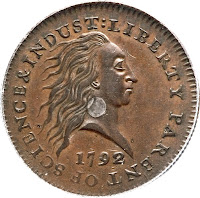 Recently, the 1792 Silver Center Cent, a pattern that was the first coin struck at the new Philadelphia Mint, sold for $1.15 million. Its design features the work of chief coiner Henry Voight, whose liberty head design has been described as “scary.” But it is the story of the founding of the Mint and of the Mint’s first director, David Rittenhouse.
Recently, the 1792 Silver Center Cent, a pattern that was the first coin struck at the new Philadelphia Mint, sold for $1.15 million. Its design features the work of chief coiner Henry Voight, whose liberty head design has been described as “scary.” But it is the story of the founding of the Mint and of the Mint’s first director, David Rittenhouse.
We may never see rare coins sell for the same prices as famous works of art, but the numismatic community can celebrate the stories and history of these iconic coins in a way that the art world is not able to, which makes numismatics a special hobby.
Image Credits
Image of The Scream courtesy of the Associated Press.
1933 Double Eagle image courtesy of Wikimedia Commons.
Eliasberg 1913 Liberty Head Nickel image courtesy of Wikimedia Commons.
Image of the 1792 Silver Center Cent Pattern courtesy of Heritage Auction Galleries.
Apr 19, 2012 | auction, commentary, eBay, grading
This week, eBay sent a message to sellers who listed coins and currency for sale on the site to announce new listing policies for coins.
As coin collecting continues to grow and thrive on eBay, customers have told us time and again that knowing they can buy and sell with confidence is important. “We’ll be updating eBay’s Stamps, currency, and coins policy to help foster that confidence—this update may impact your coin listings,” read eBay’s note.
Starting May 30, all new listings and relistings in coin categories will need to meet the following requirements:
- First, listings for coins will be allowed to include a numeric grade in their listing title or item description only if the coin grading company meets certain objective standards.* Coins that haven’t been graded by these companies will be considered raw or ungraded. Currently, eBay has determined that only the Numismatic Guaranty Corporation (NGC) and the Professional Coin Grading Service (PCGS) meet these standards.
- Second, for US Coins only, grading by companies meeting these standards will now be required for all coins listed with a Buy It Now, reserve, or start price of $2,500 and above.
A footnote for the asterisked line says, “These standards will be posted on eBay’s website shortly.” The policy page has not been updated to explain the standards which the decision is based.
By this rule, coins certified by ANACS and ICG have now been reduced to second class status even though there may be nothing wrong with them. Nice coins still in old PCI holders with J.T. Stanton’s signature are also reduced to “irrelevancy” becuase of eBay’s undisclosed decision.
This is not the first time eBay has made arbitrary decisions about coin collecting based on questionable advice. In January, eBay banned the sale of replica coins where they said they worked in conjunction with the Professional Numismatic Guild to come up with a policy.
“We’ve heard from both buyers and sellers that they’d like to see more coins on eBay graded by companies who meet high standards,” read the eBay release. “These new requirements are an important step toward meeting these marketplace demands.”
As both a buyer and seller, I have never been asked.
By making this statement, eBay and not experts or the numismatic public is telling the marketplace that they know better. By making this statement, eBay will not allow me to search for or buy that old ANACS photo holder or the ICG graded error coin verified by CONECA because ANACS and ICG cannot be used in the title and description.
Rather than managing its market place, eBay has now turned themselves into an enforcement bureau making policies that could be considered a restraint of trade by telling independent sellers what they can or cannot sell that would be legal elsewhere.
Ebay has a right to limit the type of item sold on via its service. Ebay has extensive policies regarding prohibited and restricted items as well remedies for violating these policies. Now, eBay has branched out from prohibited and restricted items to practically banning LEGAL products because they do not meet arbitrary and capricious standard that they have yet to divulge.
Restraint of trade is a common law doctrine relating to the enforceability of contractual restrictions on freedom to conduct business. By eBay telling me and other sellers that we cannot properly list and sell any other coin but those encapsulated by PCGS or NGC is restricting my freedom to conduct business. Ebay will not let me sell or advertise the ICG graded error coins or the artist signed state quarters also slabbed by ICG. In other words, I would be restrained from appropriately advertising LEGAL inventory by contractually restricting my freedom to conduct business.
If there is an alternative to eBay for selling legal coins, I would like to know. The extra coins from the divesting of part of my collection will be listed there. Ebay is no longer a viable outlet to sell collectible coins.
Dec 22, 2011 | auction, tokens
Every year, usually in December, my coin club holds its annual Donated Auction. It is an auction that lasts the entire meeting of various numismatic items where the proceeds go to the local chapter of the Boys and Girls Club. It is a tradition that has existed for the 52 years of the club’s existence and I am happy that it continues.
As opposed to our regular monthly auction, there are more lots and a lot of different type of items. And since the proceeds go to charity, we are encourage to bid early and bid often. I have to admit that on items I really want, I have been known to overbid on items.
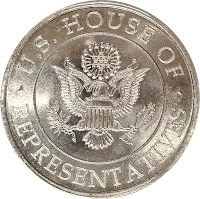
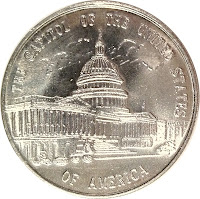 One of my overbids was for a lot with two rolls of Lincoln Cents; one roll contained 40 steel cents and the other had 50 miscellaneous wheat back cents. However, as a bonus, this lot included a U.S. House of Representatives token. Made of aluminum, about 40mm in diameter, the front of the token is the seal of the U.S. House of Representatives. The reverse depicts the east entrance of the capitol building with the south wing closer to the foreground. The south wing is where the chamber for the House of Representatives is located. The member that donated the token was a former staffer for one of the House committees who told me that the tokens were provided to staffers to give to visitors. Although the token is made of aluminum and not that rare, I have not seen one. Since I thought it had that “oh neat” factor, I overbid in order to win the lot and this token.
One of my overbids was for a lot with two rolls of Lincoln Cents; one roll contained 40 steel cents and the other had 50 miscellaneous wheat back cents. However, as a bonus, this lot included a U.S. House of Representatives token. Made of aluminum, about 40mm in diameter, the front of the token is the seal of the U.S. House of Representatives. The reverse depicts the east entrance of the capitol building with the south wing closer to the foreground. The south wing is where the chamber for the House of Representatives is located. The member that donated the token was a former staffer for one of the House committees who told me that the tokens were provided to staffers to give to visitors. Although the token is made of aluminum and not that rare, I have not seen one. Since I thought it had that “oh neat” factor, I overbid in order to win the lot and this token.
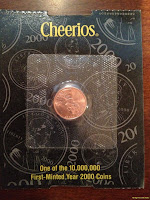
 My other “oh neat” purchase was a Cheerios Penny. The Cheerios Penny is a 2000 Lincoln Cent that placed onto plastic-sealed cards and placed in boxes of Cheerios as a special Y2K promotion. Cheerios was provided the first 10 million Lincoln Cents off the presses in 2000 by the U.S. Mint. These cents are really unremarkable except for being in the Cheerios package. The remarkable cents also included one of the first 5,500 new Sacagawea Dollars to raise awareness of the new “Golden Dollars.” The Cheerios Dollar is notable as being struck from different dies than the regular business strike Sacagawea Dollars.
My other “oh neat” purchase was a Cheerios Penny. The Cheerios Penny is a 2000 Lincoln Cent that placed onto plastic-sealed cards and placed in boxes of Cheerios as a special Y2K promotion. Cheerios was provided the first 10 million Lincoln Cents off the presses in 2000 by the U.S. Mint. These cents are really unremarkable except for being in the Cheerios package. The remarkable cents also included one of the first 5,500 new Sacagawea Dollars to raise awareness of the new “Golden Dollars.” The Cheerios Dollar is notable as being struck from different dies than the regular business strike Sacagawea Dollars.
According to the auction lot listing, there was supposed to be one Cheerios Cent and three wooden nickels. However, when I arrived at home and opened the package, there were two Cheerios Cents. If you would like your own Cheerios Cent, you can buy it on eBay!
Buying “oh neat” with the proceeds going to charity is a lot of fun.
Sep 28, 2011 | advice, auction, eBay, education
 A few times a year, I am asked about how to sell your coins, currency, tokens, and other numismatic items on eBay. If you have not sold anything on eBay, there are a few good resources for you to learn the basics. But to be successful selling coins, you should include these extra steps:
A few times a year, I am asked about how to sell your coins, currency, tokens, and other numismatic items on eBay. If you have not sold anything on eBay, there are a few good resources for you to learn the basics. But to be successful selling coins, you should include these extra steps:
- Know what you are selling. In over 200 years, the U.S. Mint has produced many coins. It may not be enough to know the denomination and date to figure out the type of coin you are selling. On a few occasions, the Mint produced two types of coins in the same denomination in the same year. One example was in 1921 when the U.S. Mint produced both the Morgan and Peace Dollars. It is important to know the difference.
- Understand the basics of grading. If you are selling coins that have been graded and encapsulated by a one of the grading services, then you do not have to worry about knowing the grade. But if you are selling ungraded coins, also known as “raw coins,” you should have an idea of the grade. You can estimate the grade by using the visual guide at PCGS Photograde™ Online. PCGS has created an app for iOS devices with the same pictures.
- Set realistic pricing. Not every coin is worth hundreds or thousands of dollars. In order to set realistic pricing, you may want to look at recently closed auctions to see the prices realized. This is a good tool find an average price. If you are still unsure about the value of your coin, try looking up your coin in the Numismedia Fair Market Value Price Guide. There is a page for each coin type and the pricing is different for each grade.
- Take clear pictures of the front and back of the coin. Even if the coin is encapsulated by a grading service, many collectors want to see what they are buying. Taking the time to take clear pictures will enhance your listing and entice interested bidders into bidding on your coin. Remember, if you are selling graded coins, you must have pictures of the grading service’s label on both sides of the slab.
- Write a descriptive title. You may be selling a coin with great eye appeal, but collectors will not look at your auction if you do not tell them what your auction is for. Include the year, mintmark, and coin type in your title. If the coin is encapsulated, include the name of the grading company and the assigned grade. If the coin is not graded, use just the letters abbreviating your estimation of the grade (G, VG, F, EF, AU, and UNC for uncirculated). If the coin is a proof coin, make sure that is noted in the title.
When you list graded coins for sale on eBay, there is a rule that says you title may only include the names of four grading services: ANACS, ICG, NGC, and PCGS. If the coin was encapsulated by another service, you must remember to take a picture of the label and note the name of the service in the description. If you mention another service in the title, mention that the coin is graded, or include the grade assigned by another service, eBay may pull your auction for violating their listing policy.
Sep 16, 2009 | auction, legal
Heritage Auction Galleries, the third largest auction house in the country and probably the largest auctioneer of coins, is being sued by a former employee alleging that Heritage executives perpetuated a “massive auction scam.” The lawsuit charges that the Heritage used an undisclosed shill bidder at auctions to inflate the price. Co-defendants of the suit include Heritage executives Gregory J. Rohan, Steve Ivy, James L. Halperin, Marc D. Emory, Paul R. Minshull, and Dagmar Byers.
Filed on May 22, the suit alleges that Heritage and its executives violated the Racketeer Influenced and Corrupt Organizations Act (RICO, Title 18, Chapter 96), and the Texas Pawn Shop Act [PDF].
The suit was brought by Gary Hendershott, an alleged expert in Civil Was memorabilia and was recently joined by Montana businessman Chris Kortlander. Kortlander claims to have “consigned thousands of individual historical manuscripts and photographs to Heritage,” and claims to have been deprived of profits because of the use of the shill bidder.
Along with Kortlander’s claim, Hendershott claims he is owed $1.6 million for commissions on auction sales. Part of the sale includes two paintings purchased by a trust Hendershott was working with. A judge ordered that sale be arbitrated after the filing of suits and countersuits.
So let me see if I understand this lawsuit. Kortlander is suing Heritage because they use a shill bidder to increase the hammer price to levels higher than if the shill was not participating and Kortlander claims he was deprived of profits? What would the profits have been if the shill was not bidding on the auction? Would the same prices have been realized?
With Hendershott’s attorney Mark Senter being accused by Heritage President Greg Rohan of rewriting the suit with “salacious headlines,” the filing reads like one of a disgruntled employee and his attorney looking for attention to force Heritage to settle rather and experience the negative press.
One could only wonder what Judge Judy would say!
Corrected second to last paragraph (as marked) to clarify the quote.
Sep 19, 2008 | auction, counterfeit
 Police auctions are not new. Since laws were enacted that allowed law enforcement to seize property used as part of commercial enterprises or purchased with ill-gotten gain, auctions of this property has become as common as some of the arrests. But in Warwick, Rhode Island, the state police will be auctioning seized coining equipment that was used by a convicted forger.
Police auctions are not new. Since laws were enacted that allowed law enforcement to seize property used as part of commercial enterprises or purchased with ill-gotten gain, auctions of this property has become as common as some of the arrests. But in Warwick, Rhode Island, the state police will be auctioning seized coining equipment that was used by a convicted forger.
In 1998, Louis B. Colavecchio, nicknamed “The Coin,” was convicted for striking near-perfect counterfeit tokens that were so good the U.S. Mint hired him as a consultant.
Colavecchio was arrested again in 2006 when high-quality counterfeits turned up in east coast casinos. His coining machines and surprised was seized as part of this arrest. On Saturday, September 20, everything goes up for auction sponsored by the Rhode Island State Police.
In addition to seized cars and other items by creditors of bankrupt businesses, the Colavecchio coining equipment includes:
Hansvedt EDM Machine with H Pulse 201E power supply, MMD Milano hydraulic press, Watson-Stillman hydraulic press, Durston electric roller mill, Barker surface grinder, Speedaire 10 gallon air compressor
If you are in the Warwick, Rhode Island area, you can attend the auction at the offices of SJ Corio Company at 22 Dewey Avenue. Those that do attend are welcome to write a report. I will consolidate the notes and post them here.
Image courtesy of SJ Corio Co.
Apr 13, 2008 | auction, coins, varieties
For those interested in collecting the finest VAM varieties of Morgan Dollars, Heritage Auction Galleries will be auctioning some of Leroy Van Allen’s collection of varieties. The auction will be this week their Central States Numismatic Society Convention Signature Auction and is available for bidding online.




























 A few times a year, I am asked about how to sell your coins, currency, tokens, and other numismatic items on
A few times a year, I am asked about how to sell your coins, currency, tokens, and other numismatic items on 
